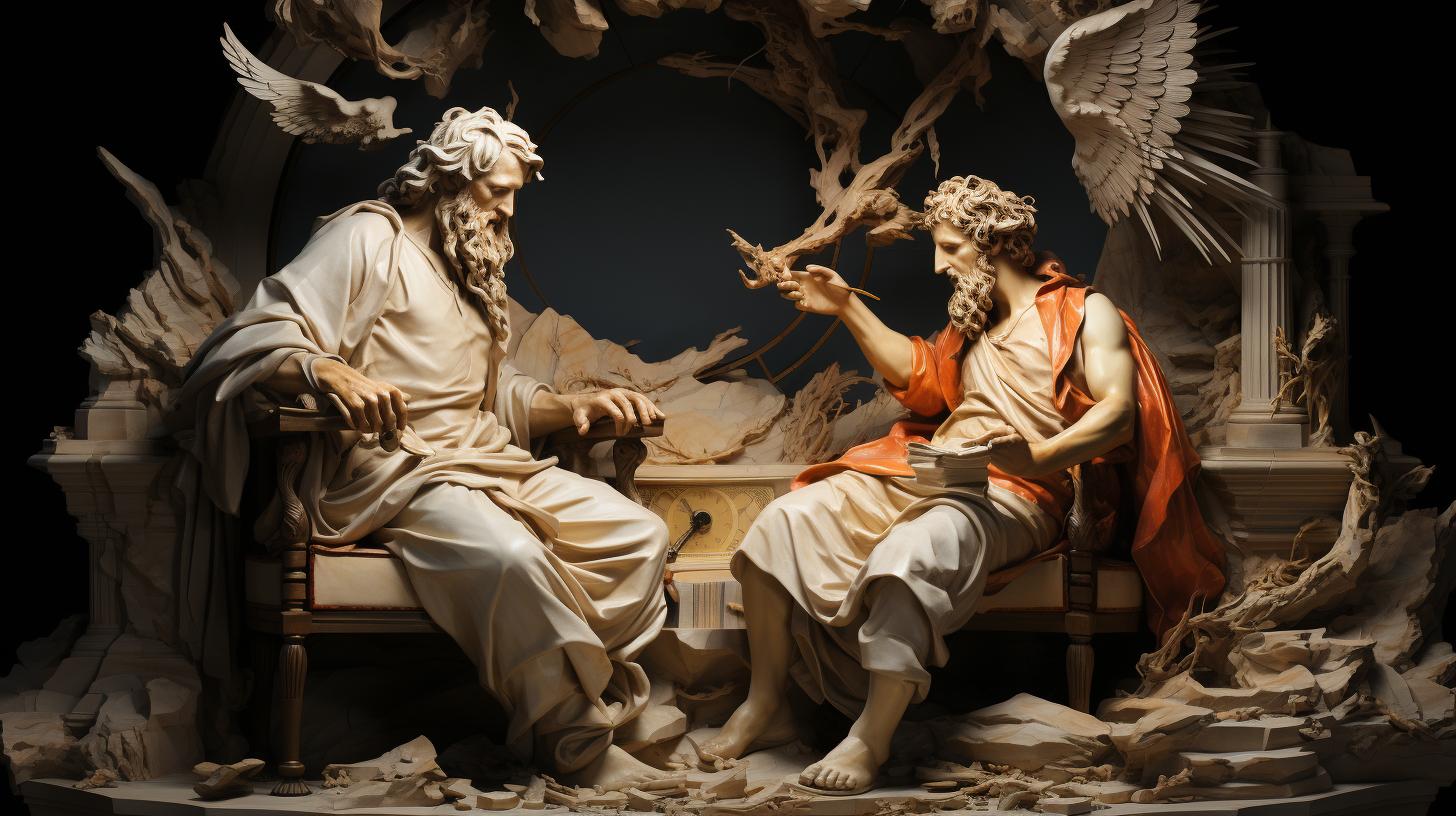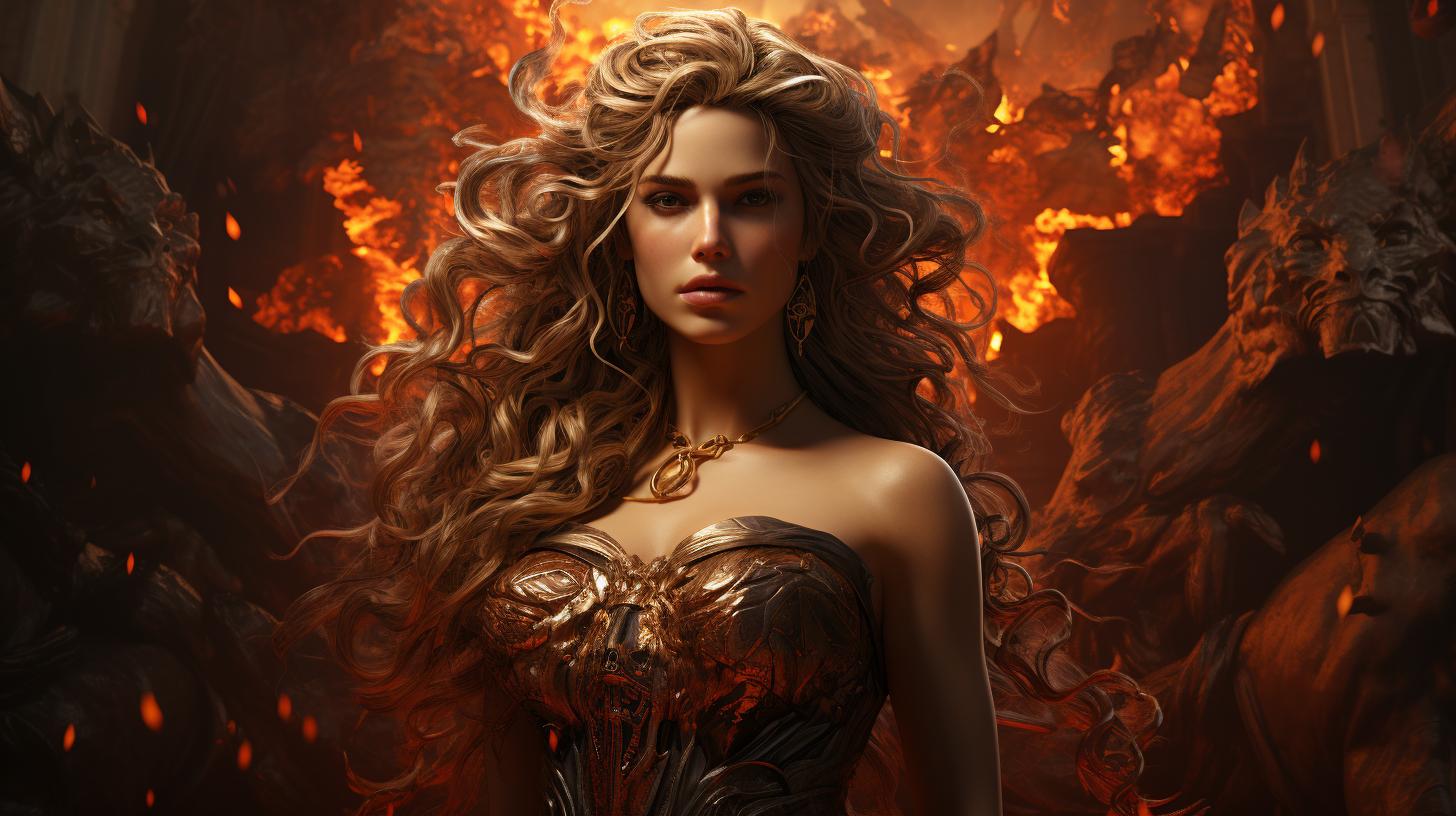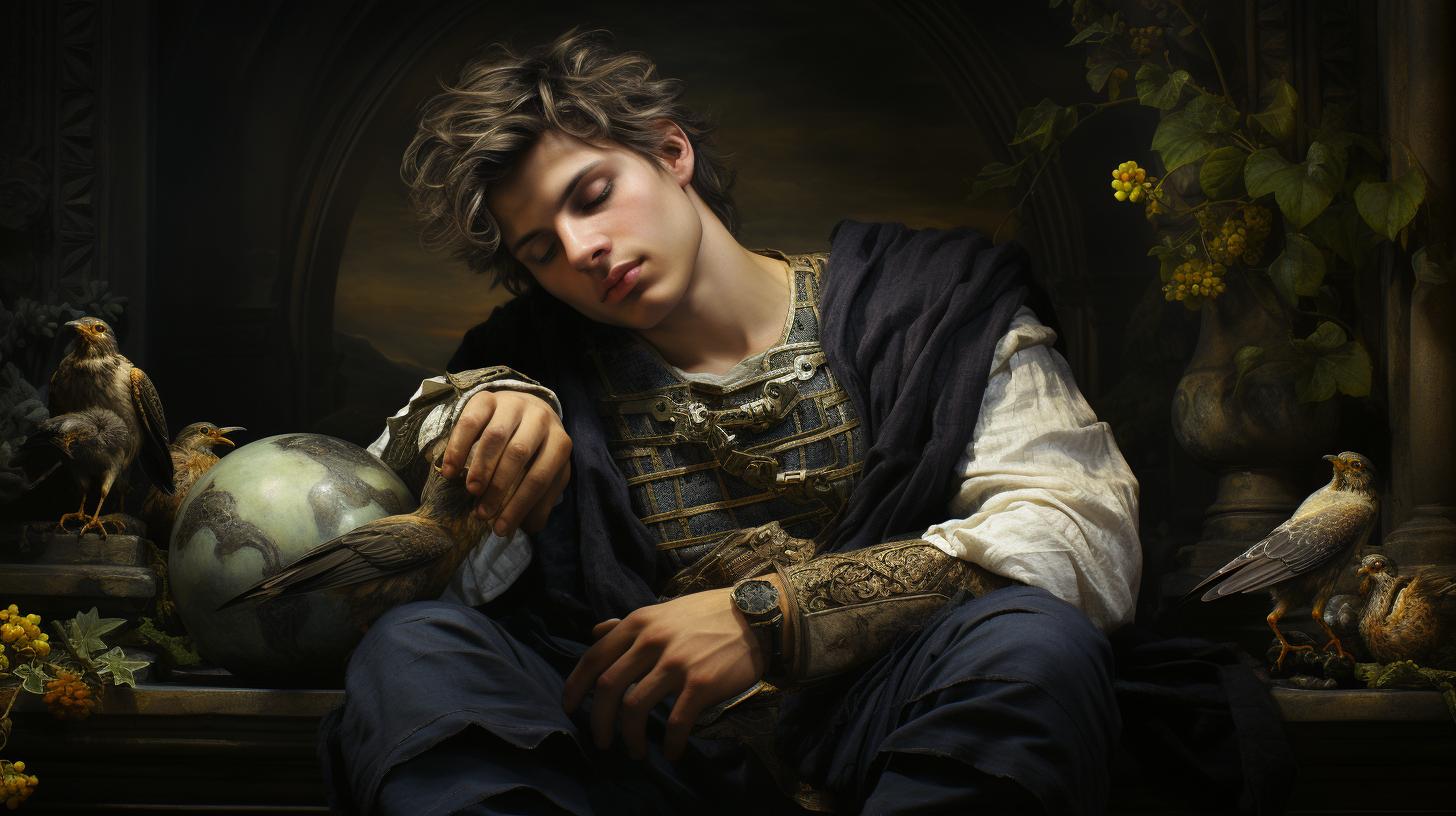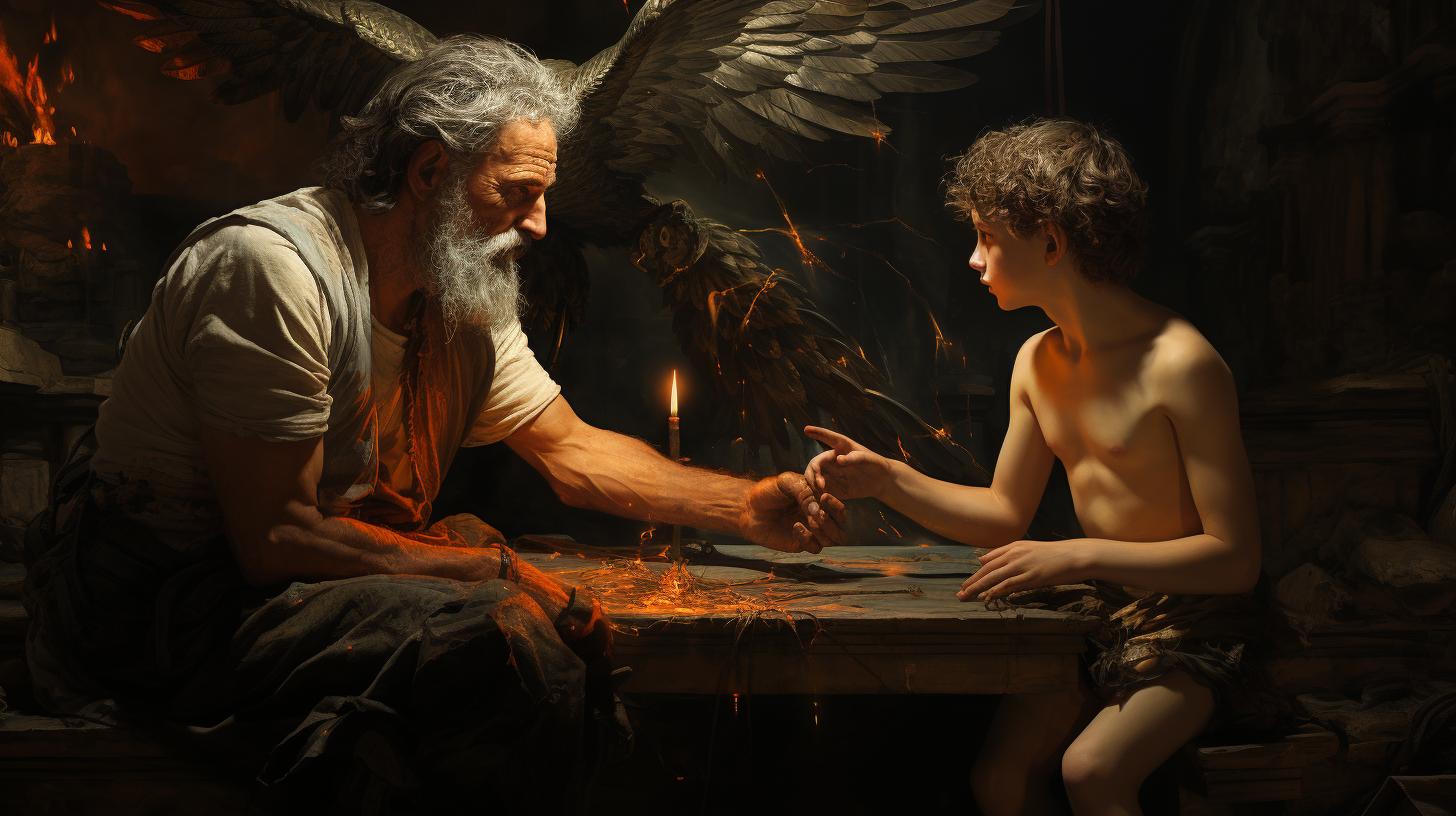Daedalus And Icarus: Exploring the Greek Mythology of Hubris and Tragedy
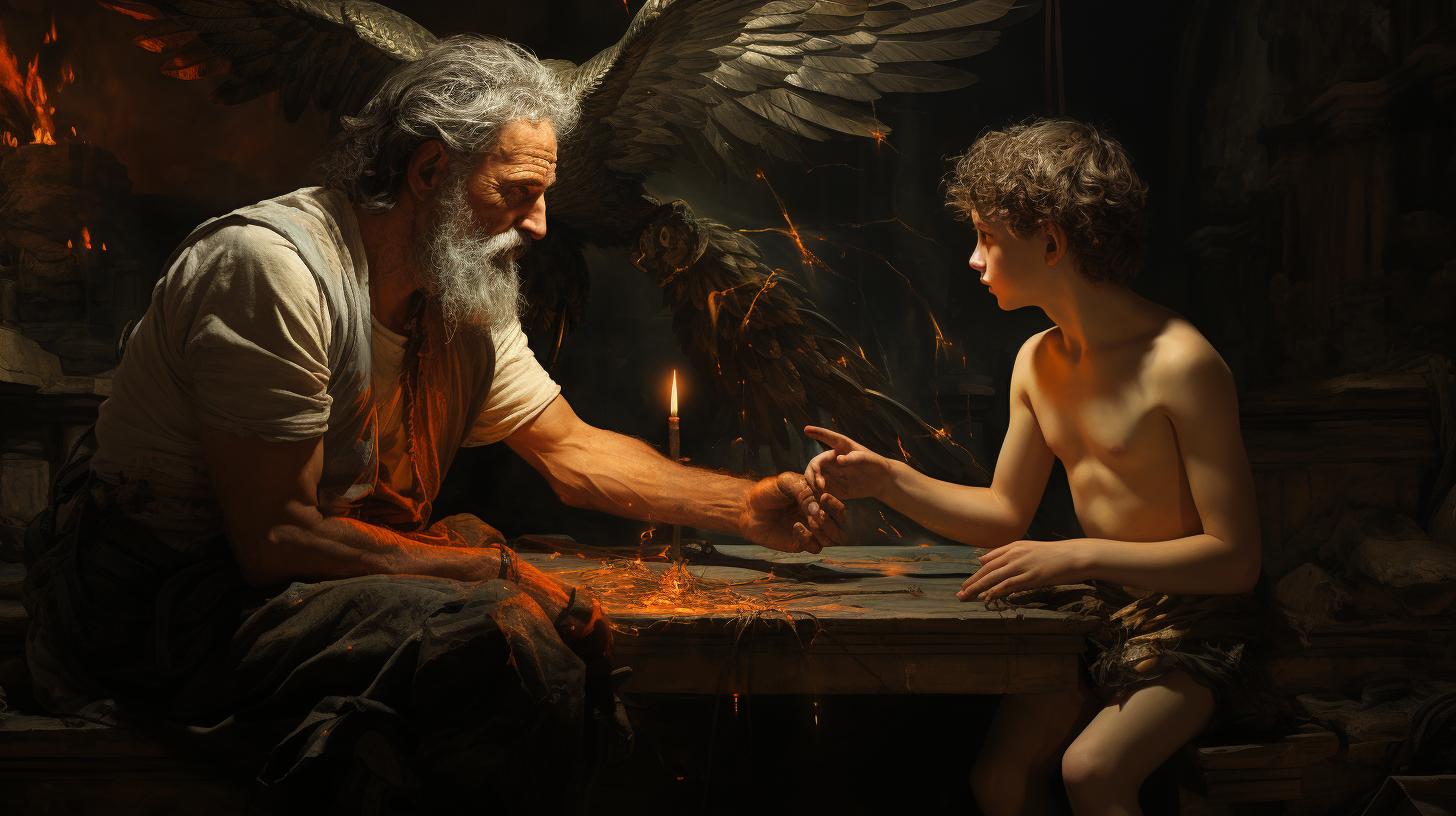
The Greek myth of Daedalus and Icarus delves into the cautionary tale of arrogance and disobedience. Daedalus, a skilled inventor, crafted wings for himself and his son, Icarus, to escape imprisonment in Crete.
Despite his father’s warnings, Icarus flew too close to the sun, causing his wings to melt and leading to a tragic ending. This article explores the background of Daedalus, their flight, lessons learned, historical context, and popular culture references.
The Myth of Daedalus and Icarus
The myth of Daedalus and Icarus is a captivating tale from Greek mythology, filled with tragedy and moral lessons. This narrative revolves around Daedalus, a skilled inventor and sculptor, and his son Icarus. The story serves as a cautionary tale, warning against arrogance and disobedience.
Let’s delve into the background of Daedalus, their imprisonment in Crete, and the birth of Icarus.
Background of Daedalus
Daedalus was renowned for his extraordinary artistic abilities and inventive mind. He excelled in various crafts, earning him the reputation of a mythical Renaissance man. His sculptures were said to come to life, showcasing his artistic prowess.
However, beneath his creative brilliance, Daedalus harbored a darker side. He faced a brief period of rivalry when his nephew, Talos, surpassed him in intelligence and skill. Fearful of being overshadowed, Daedalus pushed Talos off the Acropolis cliff.
Fortunately, the goddess Athena saved Talos and transformed him into a bird named Perdix.
Imprisonment in Crete
After being exiled from Athens for his heinous act, Daedalus found refuge in the court of King Minos in Crete. It was during his time there that Daedalus had a son named Icarus with a slave named Naukrate.
However, little information exists about Icarus’ upbringing or his relationship with his father. Daedalus’s life in Crete took a drastic turn when King Minos’s wife, Pasiphae, sought his help to satisfy her unnatural desire to mate with a bull.
Daedalus constructed a wooden cow on wheels, in which Pasiphae concealed herself to deceive the bull. This unconventional union led to the birth of the Minotaur, a half-man, half-bull creature. In order to conceal the Minotaur, Daedalus was tasked with building the Labyrinth.
The Birth of Icarus
Meanwhile, during his time in Crete, Daedalus fathered a son, Icarus, with the slave Naukrate. The details of Icarus’ birth and his early life remain shrouded in mystery.
Nevertheless, Icarus would play a pivotal role in the myth’s tragic climax.
The Flight of Daedalus and Icarus
Daedalus, the skilled inventor, and his son Icarus embarked on a daring flight from the labyrinthine prison of Crete. This section explores their flight journey, the creation of the wings, the warning from Daedalus, and the tragic outcome of their venture.
Crafting the Wings
Recognizing the need for an innovative escape plan, Daedalus crafted wings made of feathers and wax. With meticulous care, he assembled the feathers, attaching them to a framework, and secured them with wax.
The result was a pair of wings that resembled those of birds and possessed the potential for flight.
The Warning from Daedalus
Prior to their flight, Daedalus cautioned Icarus about the dangers involved in their endeavor. Concerned about the fragility of the wings, Daedalus emphasized the need to maintain a careful balance while flying.
He warned Icarus against excessive height, as the scorching heat of the sun could melt the wax binding the feathers and lead to catastrophe.
The Tragic Flight
Undeterred by his father’s warnings, Icarus approached their flight with youthful exuberance and excitement. As they soared above Crete, their extraordinary sight caught the attention of onlookers who mistook them for gods.
However, consumed by the thrill of flying, Icarus disregarded his father’s advice and soared too close to the sun.
Tragedy struck as the intense heat of the sun caused the wax to melt, resulting in the disintegration of Icarus’ wings.
Helpless, he plummeted from the sky and met his tragic fate in the depths of the sea. The flight that began with such hope ended in sorrow, serving as a powerful reminder of the perils that come with recklessness and disobedience.
This ill-fated flight of Daedalus and Icarus not only captures the imagination but also serves as a timeless moral lesson. The story warns against the dangers of hubris and the consequences of ignoring wise counsel.
It highlights the importance of heeding warnings, making responsible choices, and recognizing the limitations of our ambitions.
Lessons and Themes in the Myth
The myth of Daedalus and Icarus offers valuable lessons and explores various themes that resonate throughout history and literature. This section delves into the central themes of hubris and its consequences, the dangers of disobedience, and the symbolism of the flight.
Hubris and its Consequences
One of the prominent themes in the myth is the concept of hubris, or excessive pride, and its tragic consequences. Daedalus, once a renowned artist and inventor, became consumed by his own ambitions.
His pride led him to commit heinous acts and take unnecessary risks, ultimately resulting in the demise of his son. The myth serves as a cautionary tale, reminding us of the dangers of succumbing to arrogance and overestimating our own abilities.
In Greek mythology, hubris was often punished by the gods, as in the case of Icarus. His audacious attempt to defy the laws of nature and fly too close to the sun symbolizes the consequences of unchecked hubris.
It highlights the importance of humility and moderation, serving as a reminder that excessive pride can lead to downfall.
The Dangers of Disobedience
Another underlying theme in the myth is the dangers of disobedience. Daedalus explicitly warned Icarus not to fly too close to the sun or too low to the sea, cautioning him about the potential risks.
However, Icarus, driven by youthful excitement and disregard for his father’s wisdom, chose to ignore these warnings.
This aspect of the myth teaches us about the repercussions of disregarding wise counsel and the importance of heeding the advice of those with more experience.
It emphasizes the significance of respect, obedience, and acknowledging the limitations of our own knowledge.
Symbolism of the Flight
Beyond its moral lessons, the flight of Daedalus and Icarus holds deeper symbolism. Their flight represents humanity’s inherent desire to strive for the extraordinary, to push boundaries, and to pursue freedom.
It symbolizes the human spirit’s yearning for transcendence and the pursuit of a higher purpose.
However, the symbolic nature of the flight also reminds us of the delicate balance between ambition and recklessness.
It warns against the dangers of reaching too high, too fast, without considering the potential consequences.
The flight of Daedalus and Icarus encapsulates the human quest for greatness, the allure of defying limitations, and the need for self-awareness and introspection.
It urges us to pursue our dreams with humility, wisdom, and a careful recognition of the boundaries that nature and fate impose.
Historical Context of the Myth
The myth of Daedalus and Icarus is deeply rooted in the ancient Greek civilization, reflecting the cultural and historical milieu of the time. This section explores the historical context of the myth, shedding light on the significance of ancient Greece, its artistic achievements, and its lasting impact on art and literature.
Ancient Greek Civilization
Ancient Greece, renowned for its advancements in various fields, including philosophy, literature, art, and architecture, laid the foundation for Western civilization. The city-states of Athens, Sparta, and others fostered an environment of intellectual and artistic flourishing.
During this period, Greek mythology thrived, serving as a way to explain natural phenomena, showcase moral lessons, and explore the human condition.
Greek mythology, with its pantheon of gods and heroic tales, played a vital role in shaping the cultural identity of the ancient Greeks.
It provided a rich tapestry of stories that embodied their beliefs, values, and fears. The myth of Daedalus and Icarus, with its themes of hubris and disobedience, resonated deeply with the ancient Greeks, reflecting their collective understanding of the consequences of overstepping boundaries and challenging the gods.
Influence on Art and Literature
The myth of Daedalus and Icarus has had a profound influence on art and literature throughout history. Artists, writers, and poets have drawn inspiration from this captivating tale, infusing their works with its themes and symbolism.
In the realm of visual arts, numerous depictions of Daedalus and Icarus can be found in ancient Greek pottery, sculptures, and frescoes. These artistic renderings often portrayed the moment of Icarus’ fall, capturing the tragic climax of the myth and symbolizing the fleeting nature of human ambition.
Furthermore, the story of Daedalus and Icarus has found its way into the written word. Ancient Greek playwrights, such as Euripides and Aeschylus, incorporated elements of the myth into their dramatic works, exploring the complex dynamics between mortals and gods, morality, and the consequences of pride.
Over the centuries, renowned authors like Ovid, Dante, and Joyce have also referenced or retold this myth, ensuring its enduring presence in the literary canon.
In conclusion, the myth of Daedalus and Icarus is intricately entwined with the historical context of ancient Greece.
It serves as a testament to the artistic and intellectual achievements of the ancient Greeks, while continuing to inspire and resonate with audiences across different forms of artistic expression.
Popular Culture References
Daedalus and Icarus in Modern Media
The timeless story of Daedalus and Icarus has had a significant impact on modern popular culture, inspiring various adaptations and references across different forms of media.
Here are some notable examples:
- Literature: The myth of Daedalus and Icarus has been retold in numerous books and novels, captivating readers with its cautionary tale. One notable literary work is “The Flight of Icarus” by Sally Benson, which explores the themes of ambition and the consequences of disregarding warnings.
- Film: The tragic flight of Daedalus and Icarus has been depicted in films, incorporating elements of Greek mythology and symbolism.
One notable adaptation is the 2010 film “Icarus,” directed by Dolph Lundgren, which portrays the emotional journey of a modern-day Icarus figure striving for greatness.
- Art: The iconic image of Icarus soaring through the sky has been a popular subject for artists throughout history.
Paintings, sculptures, and illustrations have depicted the mythical figure, often emphasizing the themes of hubris and the downfall of overambition.
Interpretations and Adaptations
The myth of Daedalus and Icarus has been reimagined and interpreted in various ways, reflecting the evolving perspectives of contemporary artists, writers, and filmmakers. Some notable interpretations include:
- Metaphorical Representation: The tale of Daedalus and Icarus has been seen as a metaphor for human ambition, the pursuit of dreams, and the risks involved in reaching too high.
It has served as inspiration for contemporary works exploring themes of ambition, resilience, and the consequences of unchecked desires.
- Educational Symbolism: The myth of Daedalus and Icarus continues to be taught in schools as a lesson in obedience, risk assessment, and the importance of heeding warnings.
It serves as a cautionary tale for young and old alike, teaching the value of prudent decision-making and the dangers of arrogance.
- Psychological Interpretations: Some interpretations of the story delve into its psychological implications, examining the dynamics between father and son, the complexities of parenthood, and the emotional turmoil associated with the consequences of one’s actions.
Overall, the enduring presence of Daedalus and Icarus in popular culture showcases the relevance and timelessness of their story.
As artists and creators continue to find inspiration in this ancient myth, it serves as a reminder of the power of storytelling and the enduring lessons it imparts.
.

